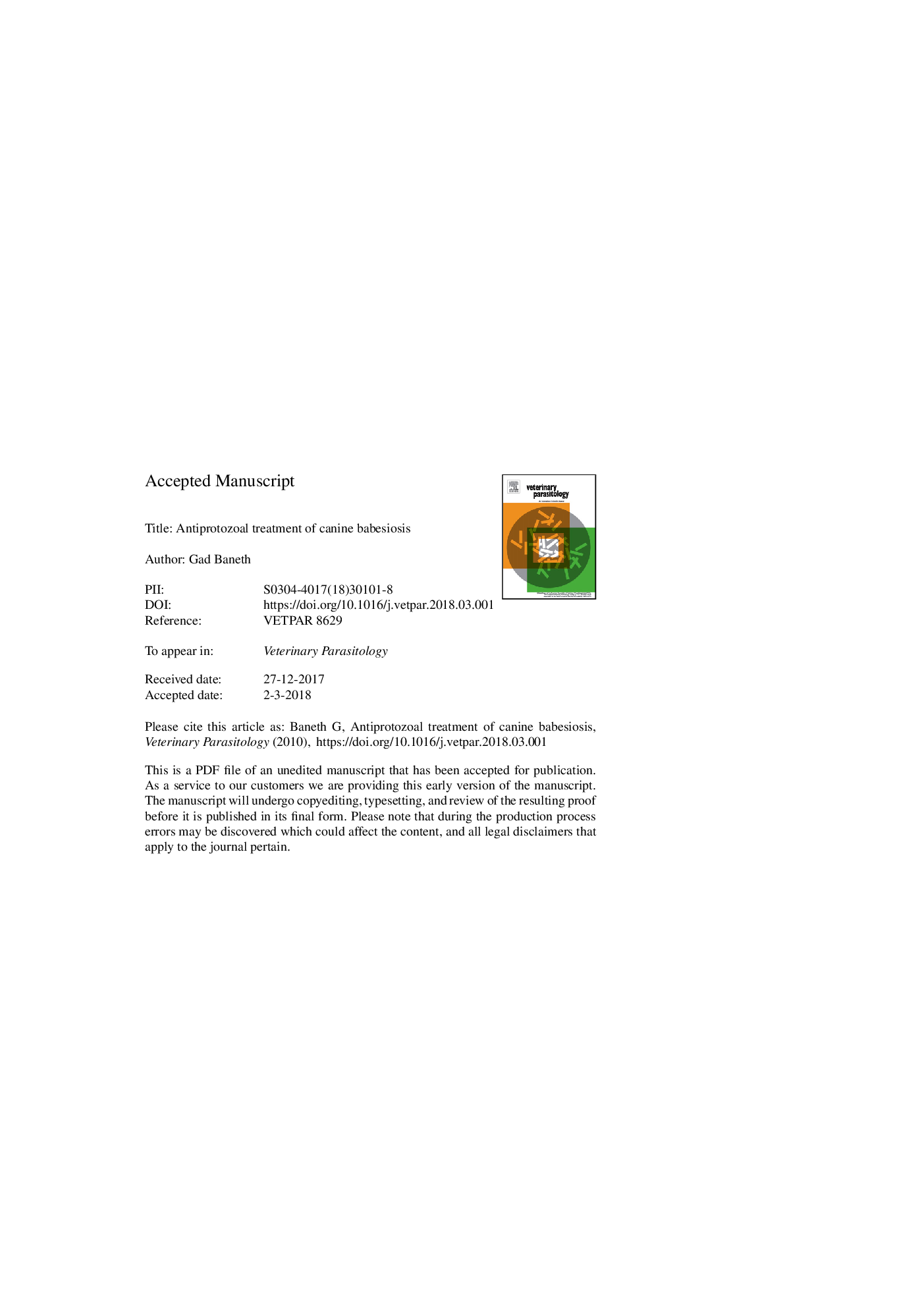| کد مقاله | کد نشریه | سال انتشار | مقاله انگلیسی | نسخه تمام متن |
|---|---|---|---|---|
| 8506002 | 1555622 | 2018 | 28 صفحه PDF | دانلود رایگان |
عنوان انگلیسی مقاله ISI
Antiprotozoal treatment of canine babesiosis
دانلود مقاله + سفارش ترجمه
دانلود مقاله ISI انگلیسی
رایگان برای ایرانیان
کلمات کلیدی
موضوعات مرتبط
علوم زیستی و بیوفناوری
علوم کشاورزی و بیولوژیک
علوم دامی و جانورشناسی
پیش نمایش صفحه اول مقاله

چکیده انگلیسی
Canine babesiosis is a tick-borne disease caused by several Babesia spp. which have different susceptebility to anti-protozoal drugs. A few drugs and drug combinations are used in the treatment of canine babesiosis often without complete parasite elimination leaving treated dogs as carriers which could relapse with clinical disease and also transmit infection further. Although the large form canine babesial species Babesia canis, Babesia vogeli and Babesia rossi are sensitive to the aromatic diamidines imidocarb dipropionate and diminazene aceturate, small form species such as Babesia gibsoni, Babesia conradae and Babesia vulpes (Theileria annae) are relatively resistant to these drugs and are treated with the combination of the hydroxynaphthoquinone atovaquone and the antibiotic azithromycin. Azithromycin and other antibiotics that have anti-protozoal properties target the apicoplast, a relict plastid found in protozoa, and exert a delayed death effect. The triple combination of clindamycin, diminazene aceturate and imidocarb dipropionate is also effective against B. gibsoni and used to treat atovaquone-resistant strains of this species. Novel drugs and the synergistic effects of drug combinations against Babesia infection should be explored further to find new treatments for canine babesiosis.
ناشر
Database: Elsevier - ScienceDirect (ساینس دایرکت)
Journal: Veterinary Parasitology - Volume 254, 30 April 2018, Pages 58-63
Journal: Veterinary Parasitology - Volume 254, 30 April 2018, Pages 58-63
نویسندگان
Gad Baneth,